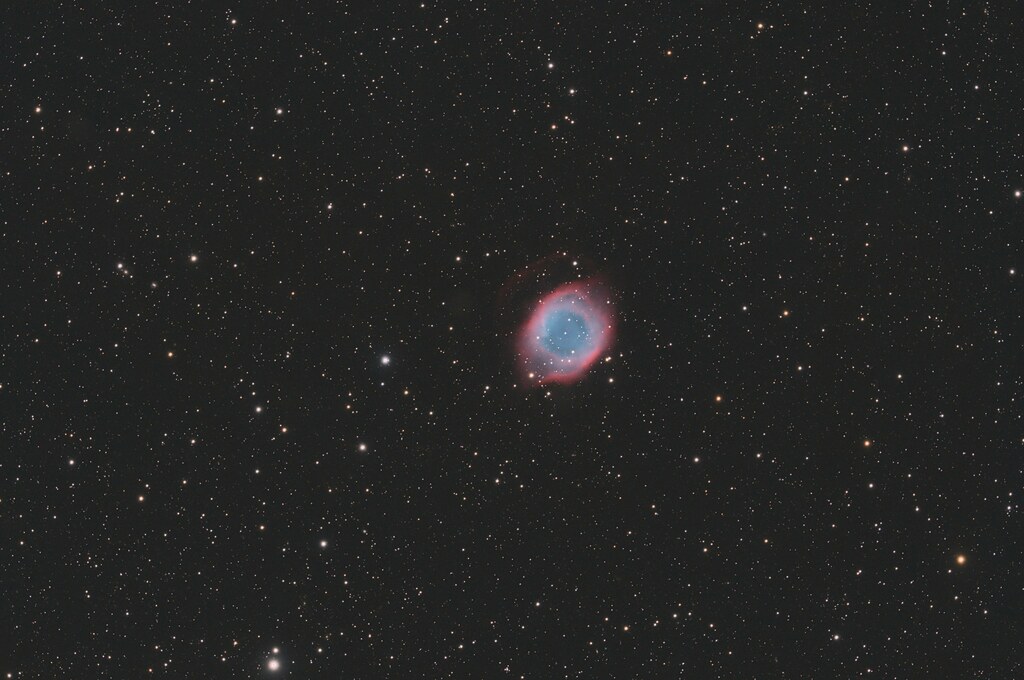I didn’t plan to image this object in Namibia, since it is quite small. However, when I saw the results of Centaurus A and what the resolution of the D7000 could bring in terms of sharpness (and being able to crop), I decided I would give this object a try as well.

The Helix nebula
The Helix nebula, NGC 7293, is a planetary nebula. The Helix is one of the closest planetary nebula’s at a distance of only 700 light years from earth. We see an expanding shell of ionised gas being ejected by an old ‘red giant’ star late in its live. The central stellar core will eventually become a white dwarf star.
Imaging the Helix
The Helix nebula would come up later in the night and suffer a bit from the zodiacal light. I had planned to do another imaging session on it to get more frames so I would be able to get rid of the noise some more and pick some more of the faint nebulosity, but unfortunately the last 3 nights were clouded out so I wasn’t able to do so. This is basically the only image in which I had to ‘battle’ with noise in the processing.
Still I think it is a very nice result considering the fact I was shooting this with an unmodified Nikon D7000.

Helix nebula Acquisition details
Date: July 16, 2015
Location: Kiripotib, Namibia
Optics: APM 107/700 with Riccardi 0.75x reducer
Mount: Fornax 51
Camera: Unmodified Nikon D7000
Guiding: Lacerta MGEN
Exposures: 22x10min ISO400

With such a small object do you mind if I ask why you used the .75x reducer?
I’m planning on attempting this object soon myself.
Thanks~
The Riccardi reducer is also a flattener. So in order to get a larger usable fov I had to use it 🙂
Is it possible to use a regular Nikon lens and if so what would be a reasonable size?
Are you asking for this object in particular? Then I’d say you really need 400mm minimum to get a good result. It’s a small object 😉